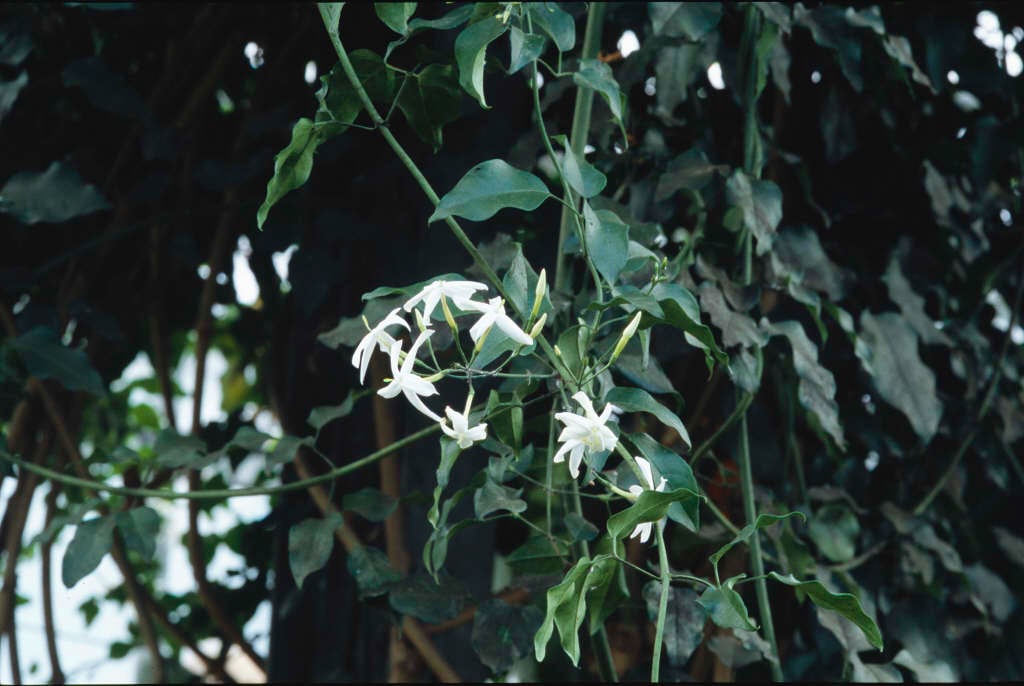Jasminum azoricum
white Azorean jasmine
A twining or scrambling evergreen shrub to 3m or more, with dark green leaves composed of three wavy-edged, ovate leaflets, and fragrant white flowers 2.5cm across, in terminal panicles
Size
Ultimate height
2.5–4 metresTime to ultimate height
5–10 yearsUltimate spread
0.5–1 metresGrowing conditions
Moisture
Well–drainedpH
Acid, Alkaline, NeutralColour & scent
| Stem | Flower | Foliage | Fruit | |
| Spring | Green | |||
|---|---|---|---|---|
| Summer | White | Green | ||
| Autumn | Green | |||
| Winter | Green |
Position
- Full sun
Aspect
South–facing
Exposure
Sheltered Hardiness
H2Botanical details
- Family
- Oleaceae
- Native to GB / Ireland
- No
- Foliage
- Evergreen
- Habit
- Climbing
- Genus
Jasminum are evergreen or deciduous shrubs, many climbing by twining stems bearing usually pinnate leaves, and star-shaped white, pink or yellow flowers, which are sometimes very fragrant. Fruit a black berry
- Name status
Correct
- Plant range
- Madeira
How to grow
Cultivation
Tender, so suits a conservatory or cool greenhouse. Grow in a peat-free, loam-based compost in bright filtered light or full light with shade from hot sun. Apply a potassium rich fertiliser such as tomato feed monthly in the growing season. Water less frequently in winter
Propagation
Take greenwood cuttings of soft, young growths, taken in early spring and rooted under mist or in two parts sharp sand to one part peat substitute with bottom heat at 16C (61F)
Suggested planting locations and garden types
- Patio and container plants
Pruning
Train using the following detail: climbers: training and pruning on planting and once a twining habit is established, pruning is less frequent. Minimal pruning will leave plants looking attractive but some thinning will be needed from time to time, after flowering, to prevent accumulation of weak and older stems. Plants will usually respond to fairly hard cutting back in late winter, but may be slow to recover
Pests
May be susceptible to aphids, scale insects and mealybugs and glasshouse red spider mite under glass
Diseases
May be susceptible to honey fungus (rarely)
Get involved
The Royal Horticultural Society is the UK’s leading gardening charity. We aim to enrich everyone’s life through plants, and make the UK a greener and more beautiful place.
